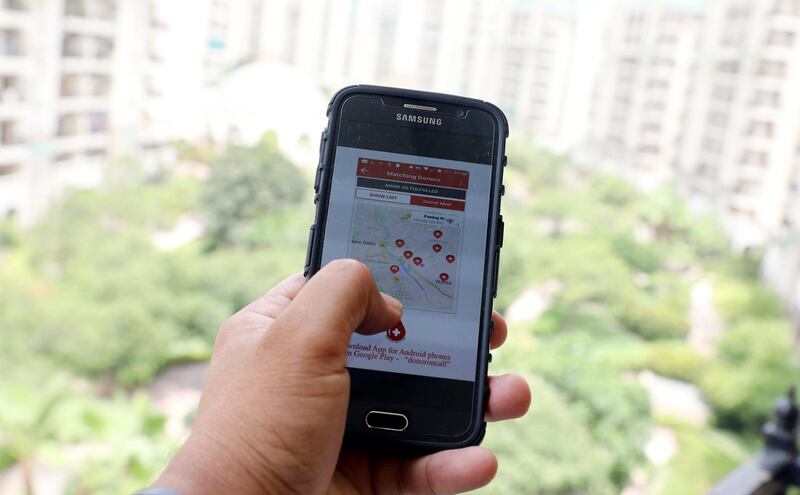For prime minister Narendra Modi and his administration, the philosophy of governance echoes an Apple slogan: "There’s an app for that".
Since Mr Modi’s election in 2014, his government has leaned into its proclivity to launch smartphone apps for its citizens.
There’s an app to follow the status of income tax refunds, an app to track the progress of rural electrification schemes, two separate apps that disburse information about applying for passports, and an app to check if a name is included in the voter registry, among many others.
No reliable tally of these apps exists, but it is safe to say they number in the dozens.
Mr Modi himself engages with his public through three apps: one that is officially linked to his office, another that is simply called the Narendra Modi app, and a third called “Mann Ki Baat” or “Things on my Mind” that archives the prime minister’s speeches.
On occasion, it can even seem as if a new app is the government’s instinctive response to a problem.
Last year, when Mr Modi announced a demonetisation drive that made cash payments difficult, the government introduced the app, BHIM, to enable instant bank transfers.
In May, four months after a soldier in the army took to social media to complain about his unit’s conditions, the government launched a “grievance redressal mobile app” to help soldiers send complaints directly to the home ministry.
The apps fit with Mr Modi’s projected image — of an internet-savvy leader — and with his Digital India campaign, which was launched in July 2015.
Ms Charru Malhotra, an e-governance scholar who teaches at the Indian Institute of Public Administration in New Delhi, said she was at first sceptical of Mr Modi’s new slogan.
“At the time, I thought it was just a repetition of the old slogan, to take governance to people’s doorsteps,” she said. “But when I visited villages and talked to people, I did find that for a majority of [the residents], the government seemed to have come closer to them because of these apps.”
Ms Malhotra said she initially was concerned the apps would reach only the literate citizens that can afford a smartphone, leaving swathes of rural India out of their ambit. However, by her reckoning, India’s base of smartphone users — roughly 300 million — indicates that there is on average at least one smartphone in every family.
Although most literate people are comfortable navigating English-language app stores, Ms Malhotra said more content should be available in local languages.
She also said that the increasing number of apps can become “confusing”.
“I think always: One India, one app. If this plethora of apps is confusing for someone like me, who studies them, imagine what it’s like for the average citizen,” said Ms Malhotra.
In Bangalore, software engineer Sulleiman Ahmed downloads as many government apps as he can. He does this “purely out of curiosity. I want to see what they’re all about”.
Mr Ahmed said that some apps — including those associated with the prime minister directly — are updated frequently and kept glitch-free, while many others are not user friendly, have bugs and grow stale rapidly.
“It’s like they just launch the app and then forget about it,” he said.
The haste to put an app to a service is “part of a deeper problem of confusing outcomes with products”, said Ananth Padmanabhan, a fellow at Carnegie India whose primary research deals with technology and public policy.
“Digital India has led to a fixation with the release of all kinds of products … of which apps are truly the easiest to launch.
“There are also these intrapreneurship programmes now within government departments, where staffers can come up with innovative solutions. I suspect many of these apps are launched as part of such ‘innovative’ thinking by these chaps, making everyone happy in the process.”
The government has attempted to situate itself in a favourable light by using apps, said Mr Padmanabhan, providing an example from the demonetisation campaign last year.
When cash was in short supply in bank ATMs, the government used a number of apps to indicate the locations of “micro-ATMs”, which had been temporarily set up to dispense banknotes.
“But in reality, many were not functional or not manned properly, or were in locations with no internet access,” said Mr Padmanabhan.
The release of an app itself might, however, prompt government departments to “set their house in order”, said Ms Malhotra. “Even if I’m being compelled to launch an app, I have to then build some kind of capacity internally to back it up.”
“It may look cosmetic,” she said. “But these apps are giving citizens multiple windows into the processes of governance. The government is laying itself bare in a way, and that means it will be forced to tighten up its systems.”





